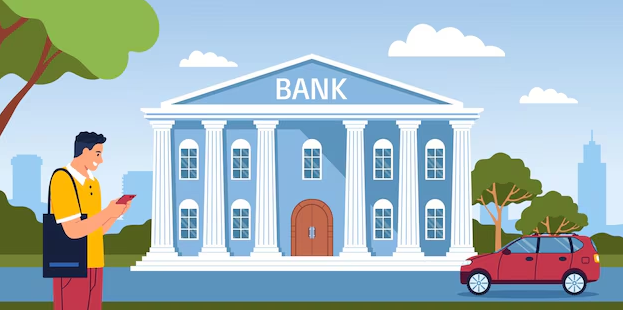Local banking institutions have played a pivotal role in shaping and supporting the economic and social fabric of communities in the United States and Canada. These institutions, which include credit unions, community banks, and regional banks, serve as the cornerstone of financial stability and growth for individuals, small businesses, and local organizations.
Their presence is more than just transactional; it fosters trust, nurtures relationships, and ensures that financial services remain accessible to all segments of society. Understanding the multifaceted contributions of local banking institutions highlights their indispensable role in the development and sustainability of communities across North America.
Bridging financial gaps in underserved areas

One of the primary functions of local banking institutions is their ability to bridge financial gaps in underserved areas. In both urban neighborhoods and rural towns, these institutions often provide essential services where larger banks hesitate to venture. Local banks understand the unique challenges faced by their communities and tailor their offerings accordingly.
In rural regions of Canada, for instance, local credit unions frequently step in to offer agricultural loans that help farmers sustain their operations. Similarly, community banks in the U.S. play a critical role in revitalizing low-income urban areas by supporting entrepreneurs who might otherwise struggle to access capital.
Moreover, the localized decision-making process of these banks ensures that loan applications are evaluated with a deeper understanding of the applicant’s circumstances. Unlike larger financial institutions that rely heavily on rigid algorithms, local banks consider factors such as community ties and personal character, creating a more equitable lending environment.
Supporting small businesses and local economies
Small businesses are the lifeblood of local economies, and local banking institutions play a crucial role in nurturing their growth. By providing accessible financing options, these banks enable entrepreneurs to start, sustain, and expand their ventures. This, in turn, generates employment opportunities, fosters innovation, and strengthens the economic resilience of communities.
In the United States, community banks are responsible for nearly half of all small business loans, despite holding a much smaller share of total banking assets. Their focus on personal relationships allows them to offer customized solutions that meet the specific needs of local entrepreneurs.
In Canada, local credit unions often collaborate with municipal governments and business development organizations to support start-ups and small enterprises. These partnerships create a robust network of support that extends beyond financial assistance, offering guidance on marketing, operations, and compliance. Such initiatives not only bolster individual businesses but also contribute to the overall vitality of local economies.
Promoting financial literacy and inclusion
Financial literacy and inclusion are critical for the empowerment of individuals and communities, and local banking institutions have taken a leading role in advancing these goals. By offering accessible resources and personalized guidance, these institutions ensure that financial services are available to everyone, regardless of their socioeconomic background.
Local banks and credit unions often host workshops and seminars on topics such as budgeting, saving, and credit management. These programs are designed to demystify complex financial concepts and equip individuals with the knowledge they need to make informed decisions. For instance, a community bank in the U.S. might organize sessions on preparing for homeownership, helping residents understand the mortgage process and plan for long-term financial commitments.
In Canada, credit unions frequently partner with schools and community organizations to introduce financial education at an early age. These initiatives help young people develop a solid foundation in money management, setting them up for future success. Moreover, programs targeting underrepresented groups, such as newcomers to Canada or Indigenous communities, aim to address systemic barriers to financial inclusion.
Local banking institutions also excel in providing alternatives to predatory financial practices. By offering fair and transparent products like low-fee accounts and small-dollar loans, they provide a lifeline for individuals who might otherwise turn to payday lenders or other high-cost options.
Building trust through personalized service
Trust is the cornerstone of any banking relationship, and local institutions excel at building and maintaining it through personalized service. Unlike large, impersonal financial corporations, local banks prioritize relationships over transactions, fostering a sense of community and mutual respect.
Employees at local banks and credit unions often live in the same neighborhoods as their customers, which creates a sense of familiarity and shared experience. This proximity allows for a deeper understanding of customers’ needs and aspirations, enabling banks to offer tailored advice and solutions. For example, a credit union in a coastal Canadian town might design savings products specifically for seasonal workers, recognizing the unique challenges they face.
The commitment to customer service extends to transparency and accountability. Local banks take pride in clear communication and ethical practices, ensuring that customers fully understand the terms of their financial agreements. This approach contrasts sharply with the sometimes opaque practices of larger financial institutions, which can erode trust and lead to dissatisfaction.
Driving community development and social responsibility
Beyond their financial functions, local banking institutions are powerful drivers of community development and social responsibility. Their investments in local projects and initiatives reflect a deep commitment to the well-being of their surroundings, going beyond profit motives to address social and environmental challenges.
In the U.S., community banks often fund affordable housing projects, ensuring that low- and moderate-income families have access to safe and secure homes. These initiatives not only address immediate housing needs but also contribute to the stability and growth of neighborhoods. Similarly, Canadian credit unions frequently support renewable energy projects, aligning their operations with broader sustainability goals.
Local banking institutions also play a critical role in disaster recovery. When communities face natural disasters or economic downturns, these banks step up to provide flexible financing and support to affected individuals and businesses. Their rapid response and empathetic approach help mitigate the long-term impact of such crises, enabling communities to rebuild and recover more effectively.
Conclusion
Local banking institutions in the United States and Canada serve as much more than financial service providers; they are vital pillars of community strength and resilience. By bridging financial gaps, supporting small businesses, promoting financial literacy, building trust, and driving community development, these banks embody the essence of localized support and engagement.
Their role in fostering economic growth and social cohesion underscores the importance of preserving and strengthening these institutions in an increasingly globalized world. As the financial landscape continues to evolve, the contributions of local banks will remain essential to the prosperity and well-being of communities across North America.






